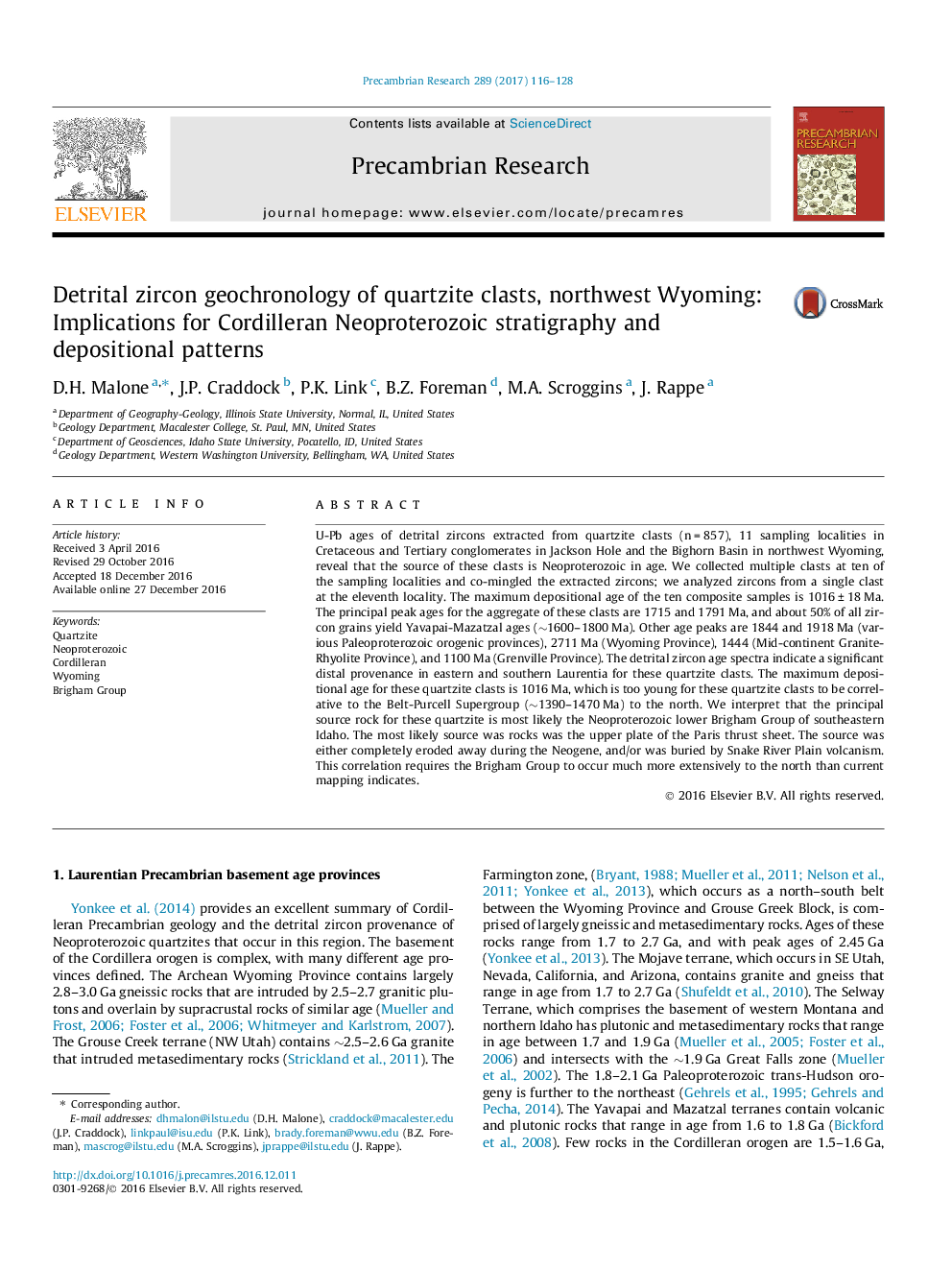| Article ID | Journal | Published Year | Pages | File Type |
|---|---|---|---|---|
| 5784924 | Precambrian Research | 2017 | 13 Pages |
Abstract
U-Pb ages of detrital zircons extracted from quartzite clasts (n = 857), 11 sampling localities in Cretaceous and Tertiary conglomerates in Jackson Hole and the Bighorn Basin in northwest Wyoming, reveal that the source of these clasts is Neoproterozoic in age. We collected multiple clasts at ten of the sampling localities and co-mingled the extracted zircons; we analyzed zircons from a single clast at the eleventh locality. The maximum depositional age of the ten composite samples is 1016 ± 18 Ma. The principal peak ages for the aggregate of these clasts are 1715 and 1791 Ma, and about 50% of all zircon grains yield Yavapai-Mazatzal ages (â¼1600-1800 Ma). Other age peaks are 1844 and 1918 Ma (various Paleoproterozoic orogenic provinces), 2711 Ma (Wyoming Province), 1444 (Mid-continent Granite-Rhyolite Province), and 1100 Ma (Grenville Province). The detrital zircon age spectra indicate a significant distal provenance in eastern and southern Laurentia for these quartzite clasts. The maximum depositional age for these quartzite clasts is 1016 Ma, which is too young for these quartzite clasts to be correlative to the Belt-Purcell Supergroup (â¼1390-1470 Ma) to the north. We interpret that the principal source rock for these quartzite is most likely the Neoproterozoic lower Brigham Group of southeastern Idaho. The most likely source was rocks was the upper plate of the Paris thrust sheet. The source was either completely eroded away during the Neogene, and/or was buried by Snake River Plain volcanism. This correlation requires the Brigham Group to occur much more extensively to the north than current mapping indicates.
Keywords
Related Topics
Physical Sciences and Engineering
Earth and Planetary Sciences
Geochemistry and Petrology
Authors
D.H. Malone, J.P. Craddock, P.K. Link, B.Z. Foreman, M.A. Scroggins, J. Rappe,
